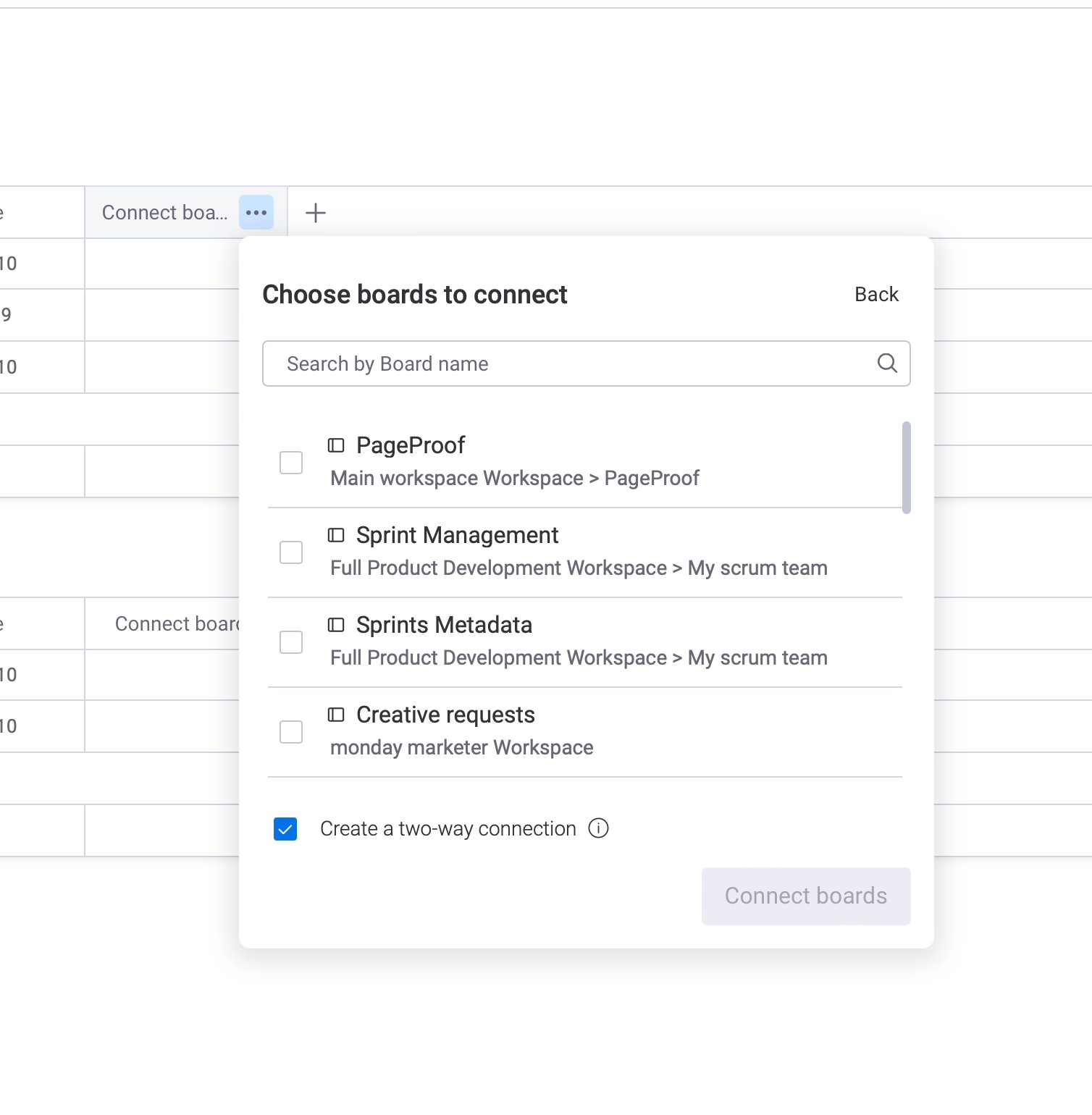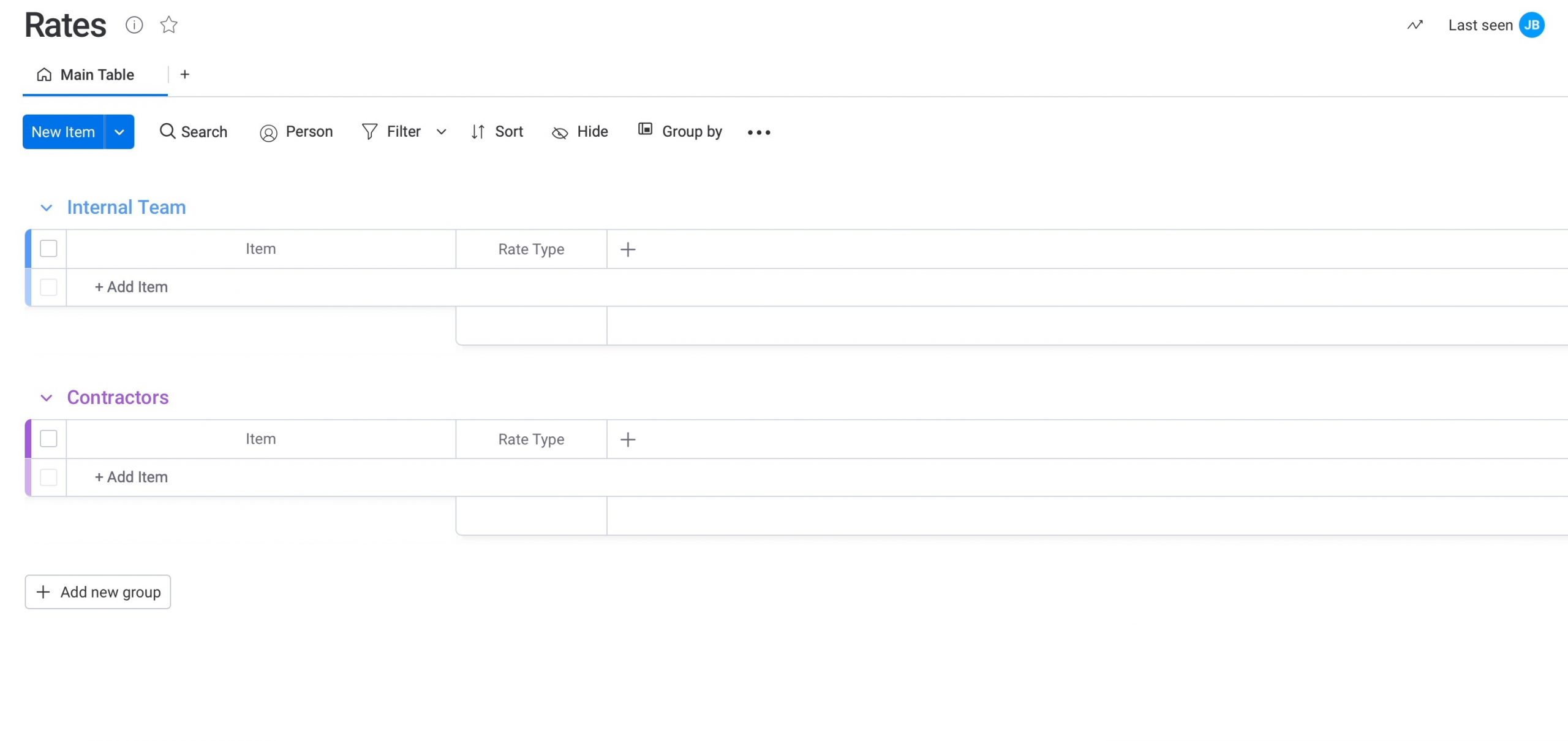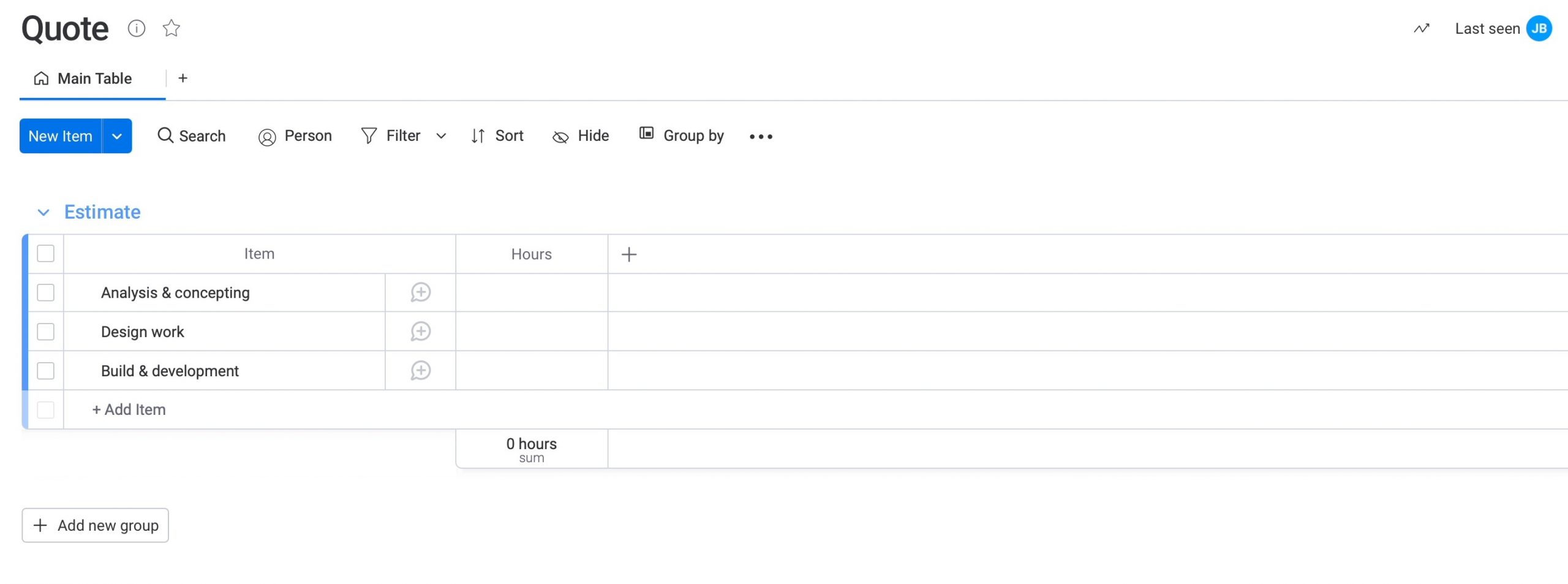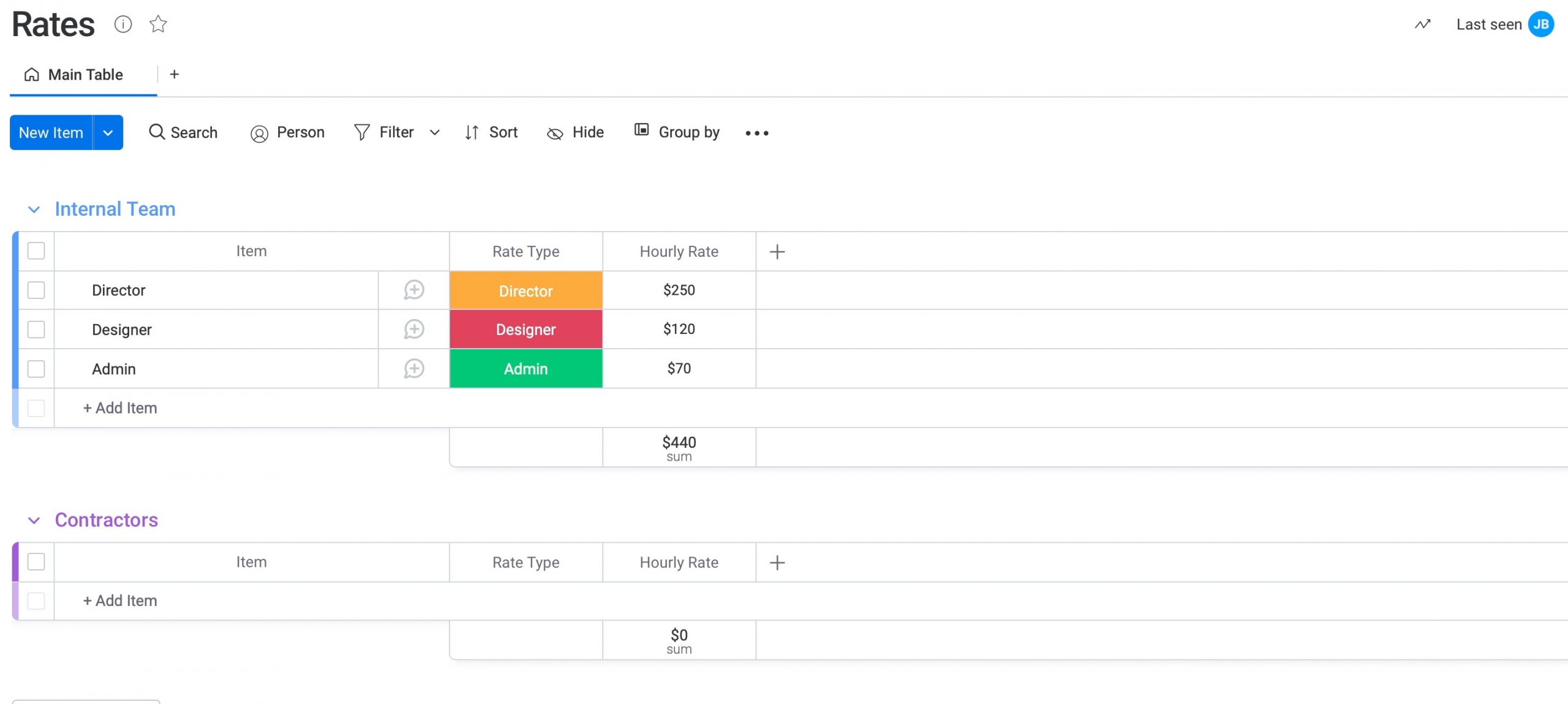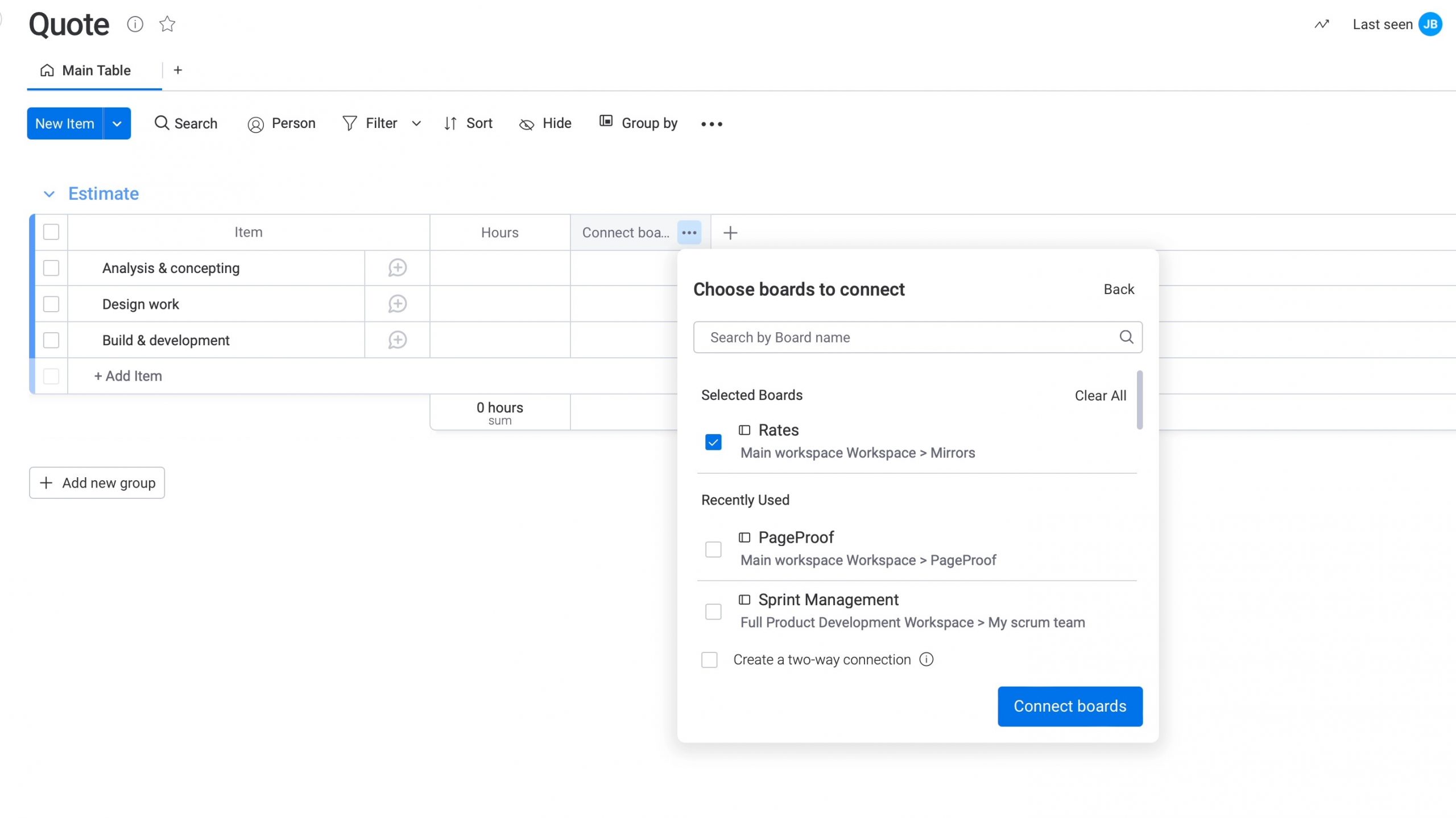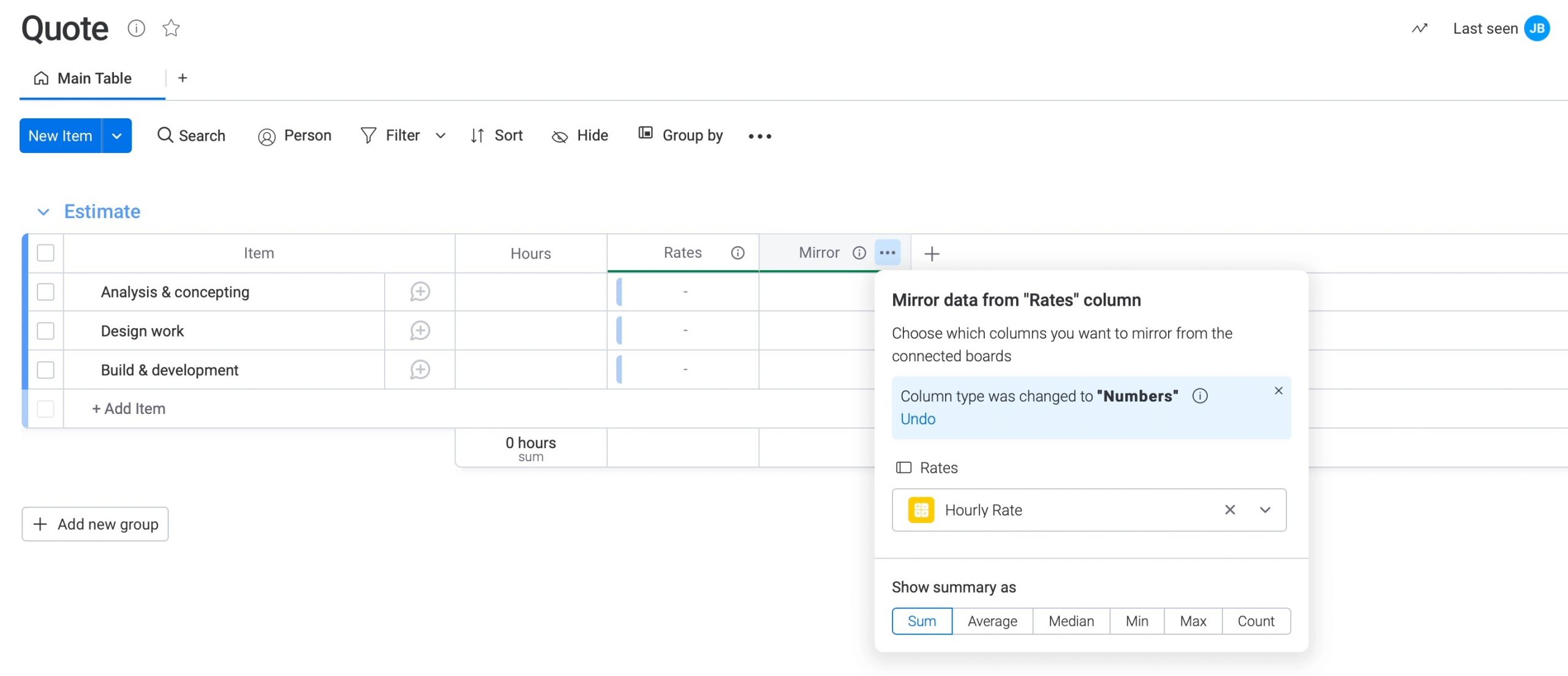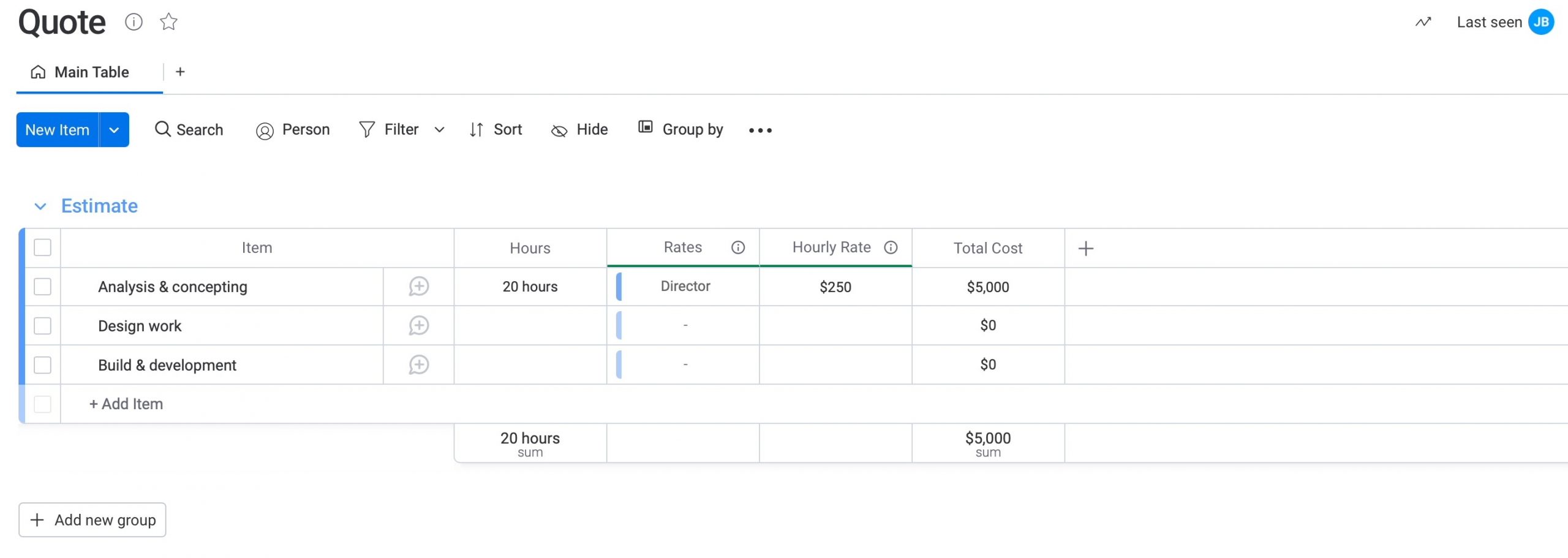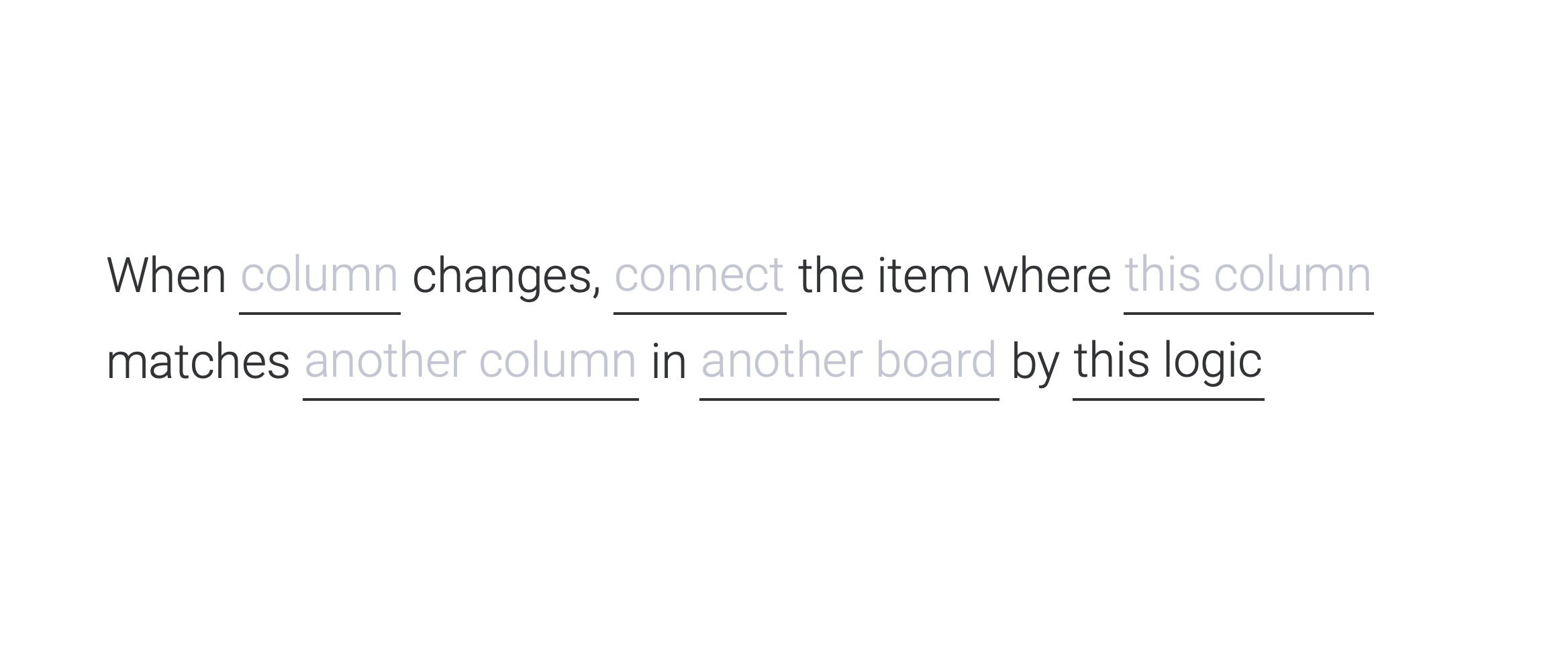Using Mirrors In Monday.com

Monday.com has a powerful feature called mirrors. So, what exactly are they and how can the be used? We’re going to cover the basics of mirrors and different ways you can use them in your Monday.com boards to achieve workflow efficiency. We’ll use a quick example to demonstrate the ways mirrors can be powerful to truly customise the ways you work.
What is a mirror in Monday.com?
Monday.com has a powerful feature called mirrors. So, what exactly are they and how can the be used? We’re going to cover the basics of mirrors and different ways you can use them in your Monday.com boards to achieve workflow efficiency. We’ll use a quick example to demonstrate the ways mirrors can be powerful to truly customise the ways you work.
When would I want to use a mirror column in Monday.com?
- Display & using dynamic rates in a quote board (we’ll show you how below)
- Attaching contact information to a business account
- Showing data from a form submission in an operational workflow
- Displaying numbers from different boards for a formula or total
What is the connected boards column?
What is the 2 way connection between boards?
An example of how to use mirrors in Monday.com
We partner with the world’s best..






Want to talk? Let's discuss your business
Find out how you can optimise your operations, simplify how your team works & boost organisational productivity. Tell us some information about your business & how you work. We'll be in touch, quickly.
"*" indicates required fields


